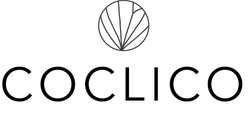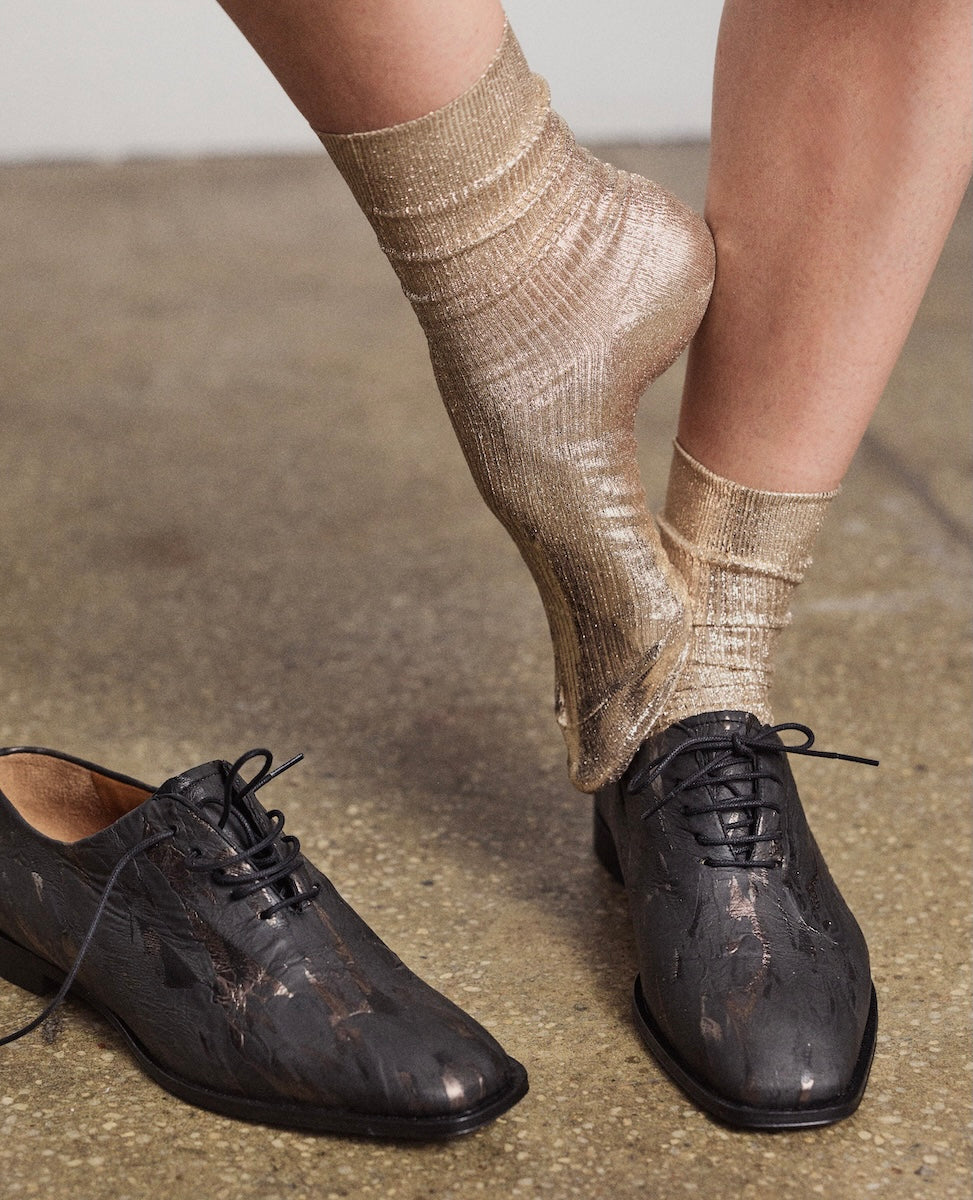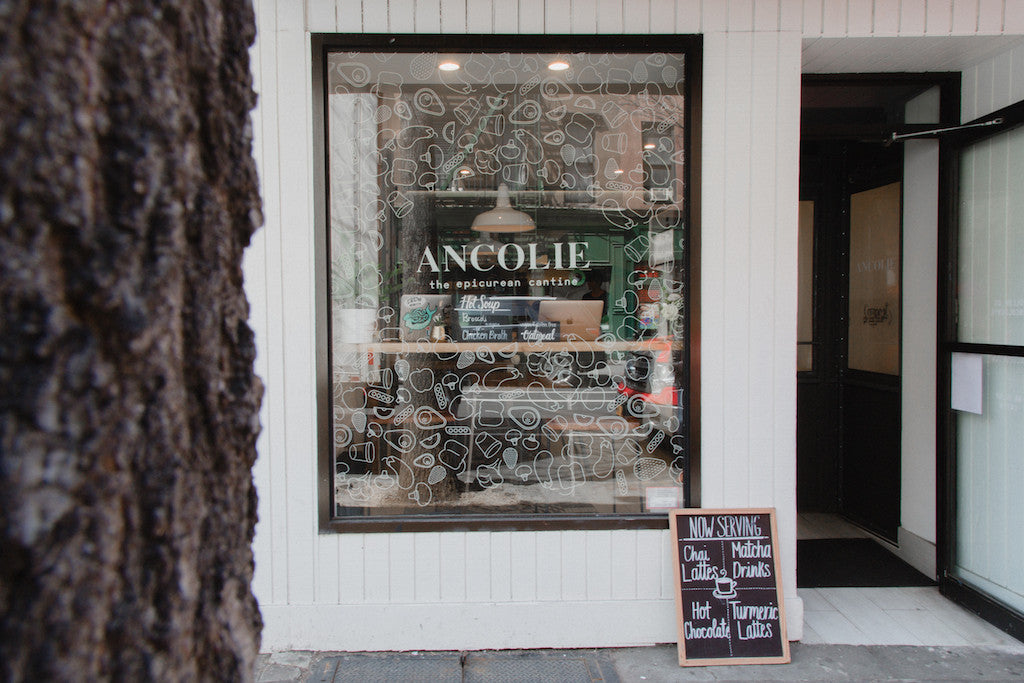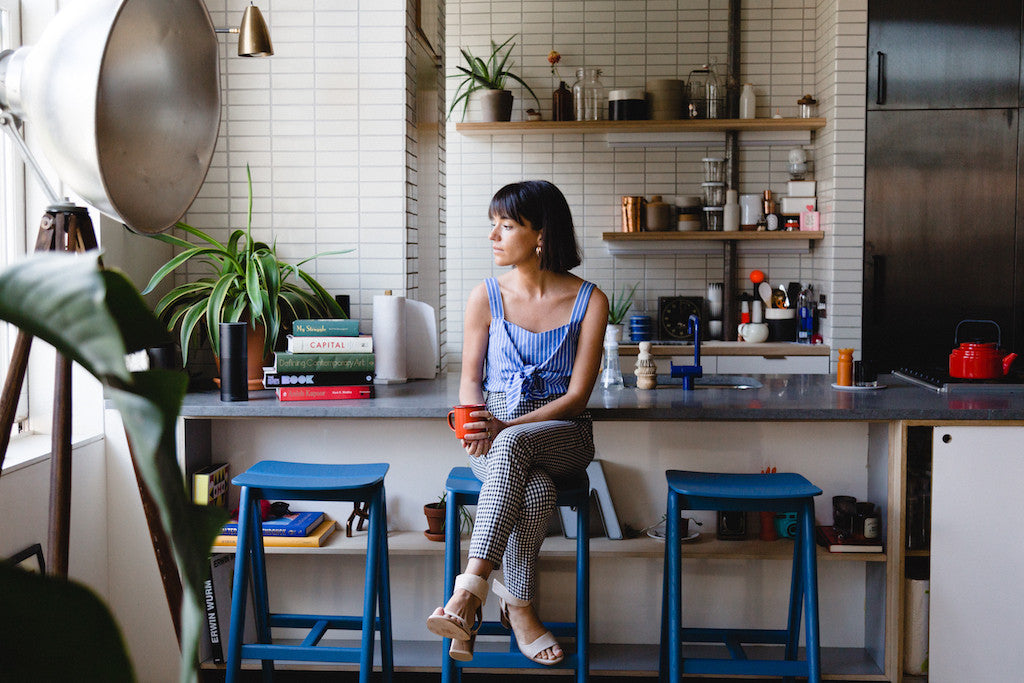Brooklyn Museum’s Lisa Small Discusses Georgia O’Keefe: Living Modern
We envy Lisa Small’s nine-to-five. As the Senior Curator of European Art at the Brooklyn Museum, Lisa spends her days among some of the most dynamic, transformative works from the equally innovative artists behind them. We’re particularly excited about her recent role in coordinating the highly anticipated exhibition, Georgia O’Keefe: Living Modern. This show itself showcases the synergies between O’Keefe’s creative persona, a penchant for independence and carefully-crafted efforts in building her public identity. Beautifully curated and thought-provoking, Living Modern truly speaks to our values of embracing modern minimalism in every facet of life. Read on as Lisa shares her favorite memories in building out the exhibit, her thoughts on uniform dressing and her guess as to what O’Keefe herself would have to say about the show.

Art of Style
The most exciting part for me was visiting O’Keeffe’s home and studio in New Mexico to make the final selection of garments to include, and then to oversee the photo shoot for the book that accompanies the exhibition. Seeing the beauty of “her” landscape and walking through the spare and peaceful rooms that she designed for herself brought my appreciation of her art and her life to a whole other level. Almost as exciting was the installation—seeing the clothes go up next to the paintings in these great vignettes was amazing.

Independent Woman
Delving into O’Keeffe’s life makes clear how she forged her own way as an independent professional woman—studying in NYC, going to teach in Texas, and coming back to New York to make it as an artist. Yes, Stieglitz helped her as a gallerist and a life partner. But theirs was an often tough relationship, and she claimed time and space for herself to work and to follow her own artistic path. Her independence allowed her to move away from slavishly copying nature in her art, away from dressing as most other women were expected to, and even away from the whole Stieglitz clan in Lake George to spend summers working alone in New Mexico. Independence means you can cancel out the noise to hone in on the essentials.
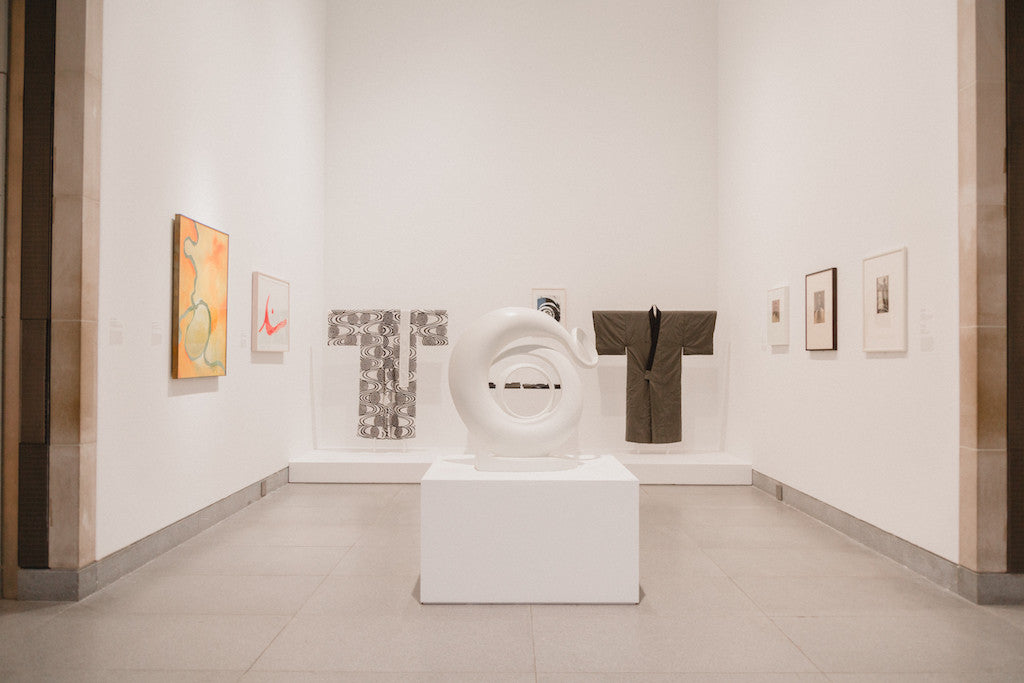
Living Modern
Overall, I hope that visitors come away with a sense of surprise, which is a hard thing when you are dealing with such a well-known artist about whom there have already been many exhibitions. I mean, who knew that she was an excellent seamstress and made her own clothes in the early years, that her distinctive manner of dressing was evident from a relatively young age, and that her “style” was actually a key part of her larger commitment to modernity. And who would have thought that she wore Pucci and Balenciaga!
Feedback suggests that many visitors to the exhibition have also been moved to think about the things that they surround themselves with and the things they wear, and want to try and emulate the way O’Keeffe created and maintained a consistent aesthetic universe. That’s my takeaway too: “living modern” means less is more: in design, in food, in all the ways one might want to express oneself artistically. It’s very hard, though, to cut through the clutter. So I think I’m only up to “dreaming modern,” or “hoping modern”….maybe I’ll actually get there fully one day!
Less is More
For me, I totally buy into the idea that having one or two “uniforms” is the way to go for a wardrobe. Simplicity in one arena makes room for clarity in any number of other arenas. Sadly, this is still mostly aspirational for me… baby steps.
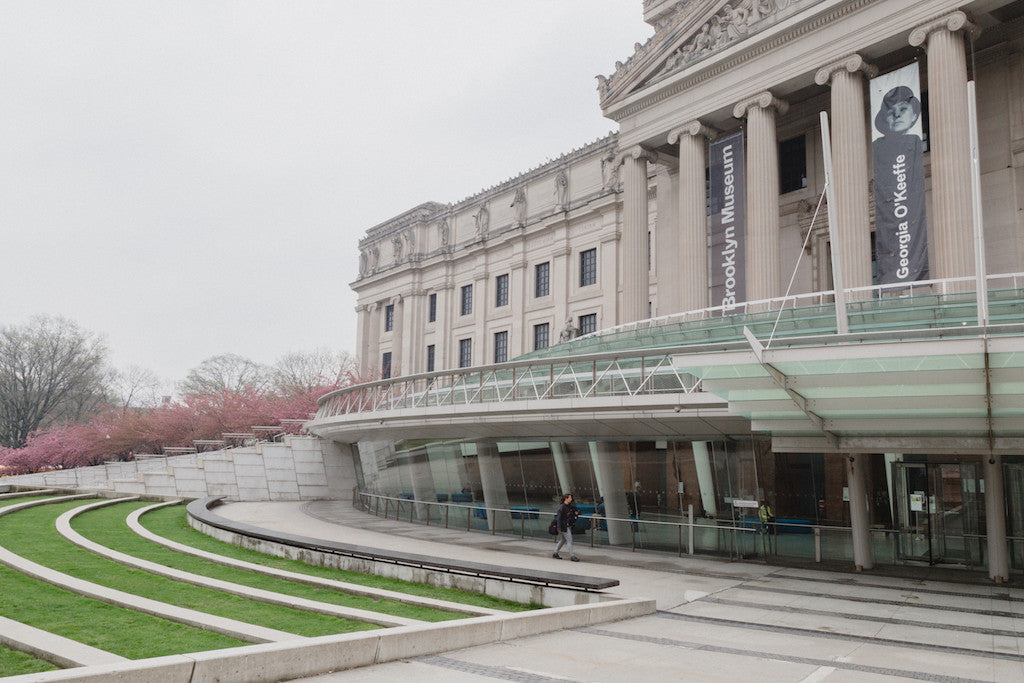
The Brooklyn Way
That this exhibition is at the Brooklyn Museum makes perfect sense in so many ways. She had her first museum exhibition at the Brooklyn Museum 90 years ago, in 1927, so that is a strong institutional connection. We have a number of important O’Keeffe pieces in our collection—some of the most popular works among our visitors—so it makes sense for us to highlight them in a special exhibition like this.
We have a long history of presenting costume and fashion exhibitions, so engagement with the sartorial is in our DNA. The emphasis in this exhibition on issues of identity and the presentation of self has appeared in a number of our exhibitions, as well as in our permanent collections. Mainly, we take pride in exhibitions that are not necessarily about a general movement or monographic survey but rather find ways of telling stories that are somewhat granular—the focus here on her clothes—but also touching on themes and ideas that many in our audience will connect with— in this case the crafting of a persona (in an age well before Instagram!).
I think (hope!) O’Keeffe would like the exhibition. She’d likely laugh at the idea of putting her clothes on view, but I think she’d appreciate that they were being examined as an integral part of her artistic vision. I know she’d like how minimal the installation design is. And she’d probably appreciate that we painted several accent walls the same rich, purply grey color as her bedroom walls in Abiquiu, New Mexico. We used the same river mud she made her paint from to match the color!
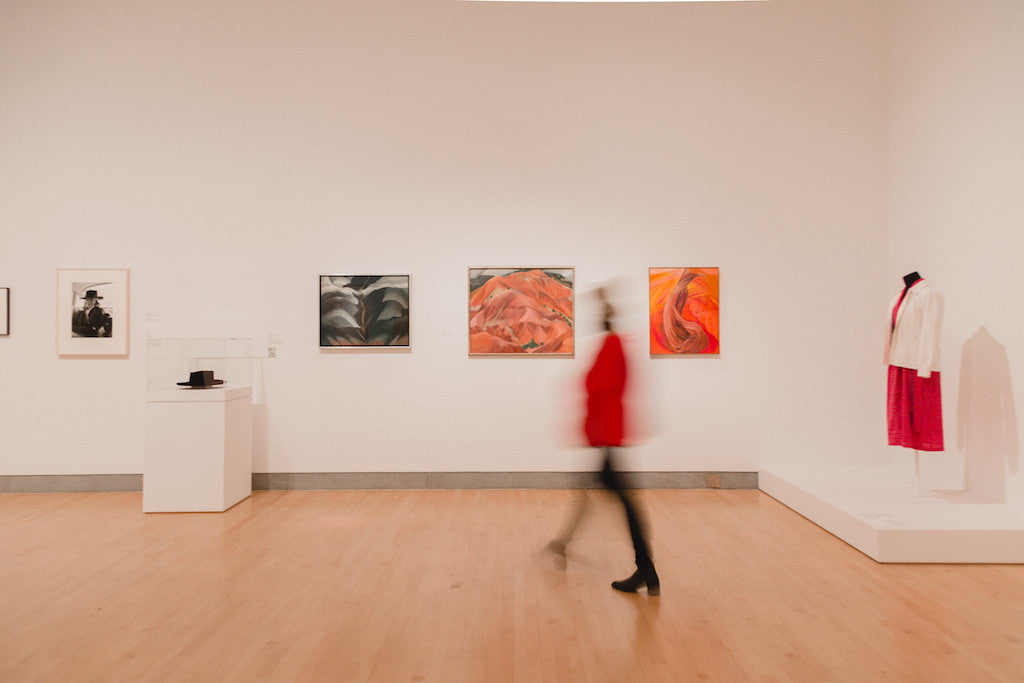
The Exhibit’s Forever Item
It’s so hard to pick just one item. Any of her simple white dresses, her black cape, her “uniform” of wrap dress or black suit speak to her vision of herself as a maker of modern images, as well as her desire to make a modern image of herself. But I think for me it is the bronze “O’K” pin made for her by Alexander Calder. It is her initials, rendered in fluid, minimal, calligraphic form, features that explain why it was her most favored accessory. But she never wore it horizontally, so it was legible as her initials. She always wore it vertically—so it became an abstracted, organic, almost plant-like form. To me, this sums up her abiding interest in creating distinctive, modern silhouettes in art and life, and her resolute individualism.
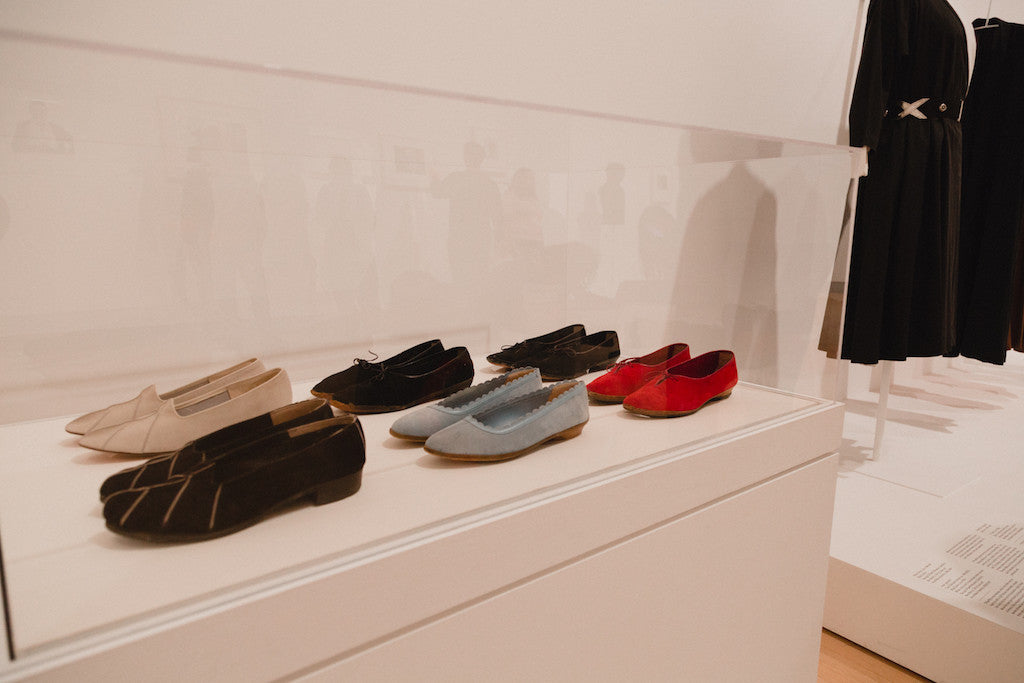
Photos by Bridget Badore for Coclico
